Search
Remove Ads
Advertisement
Summary 
Loading AI-generated summary based on World History Encyclopedia articles ...
Search Results
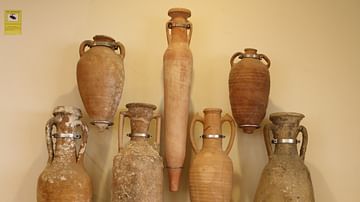
Definition
Amphora
An amphora (Greek: amphoreus) is a jar with two vertical handles used in antiquity for the storage and transportation of foodstuffs such as wine and olive oil. The name derives from the Greek amphi-phoreus meaning 'carried on both sides'...
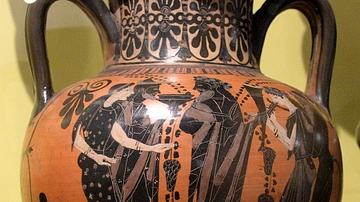
Image
Amphora, Wine Storage Jar
A black-figure drinking scene on an amphora. Amphorae are a particular type of storage vessel which were used for the storage and transportation of liquids, mainly wine. They were usually ceramic and can be dated back to the neolithic period...
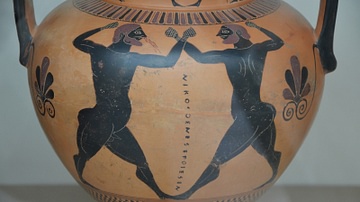
Image
Amphora showing a boxing contest
Black-figured amphora showing a boxing contest, made in Athens about 550-500 BCE, signed by the potter Nikosthenes, from Agrigento (Sicily). The boxers wearing himantes (leather thongs bound on the fist) are about to exchange blows. The boxer...

Image
Amphora with Warrior and Dog
Attic amphora depicting the departure of a warrior, found at Vulci, attributed to the Dikaios Painter, 510-500 BCE. In the centre, a young warrior stands facing a bearded archer in Phrygian costume, who looks down as if in grief. At his...
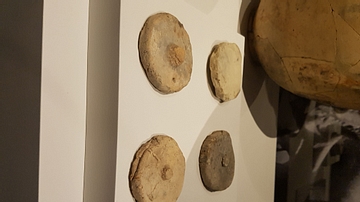
Image
Amphora Stoppers, Comacchio Shipwreck
Four ceramic amphora stoppers from the Comacchio Shipwreck. 25-1 BCE. Museo della Nave di Comacchio, (photo taken at the National Maritime Museum, Sydney, Australia)
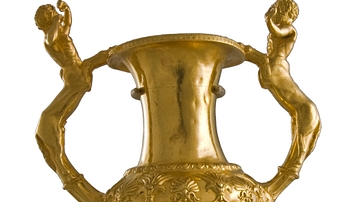
Image
Amphora-Rhyton from the Panagyurishte Treasure, Archaeological Museum - Plovdiv
Gold amphora-rhyton from the Panagyurishte treasure.
Early 3rd century BCE. Archaeological Museum - Plovdiv.
Photo: Oleg Konstantinov.
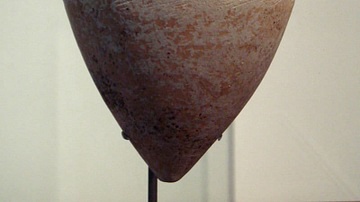
Image
Amphora, Banpo phase, Shaanxi
Yangshao hemp-cordmarked amphora, Banpo Phase 4,800 BCE (Neolithic period), Musée national des arts asiatiques - Guimet, Paris, Collection Christian Deydier.

Image
Amphora with Hercules & Amazon
A black-figure amphora depicting Hercules and an Amazon. Attica, Greece, 6th century BCE. (National Museum of Scotland, Edinburgh, UK)
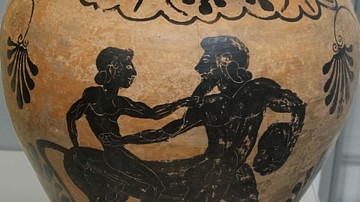
Image
Amphora suggested to be Achilles riding Chiron.
Decorated amphora in the British Museum. Figures suggested to be Achilles and Cheiron. Etruscan 500-480BCE. British Museum, London.
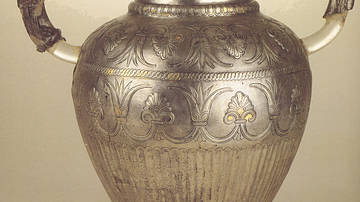
Image
Amphora-Rhyton from Kukouva Mogila Tumulus, National Archaeological Institute with Museum - BAS
Silver-gilt amphora-rhyton from Kukouva Mogila tumulus, Duvanlii. Early 5th century BCE. National Archaeological Institute with Museum - BAS. Photo: Nikolay Genov in catalogue of the exhibition Los Tracios. Tesoros enigmáticos de Bulgaria...